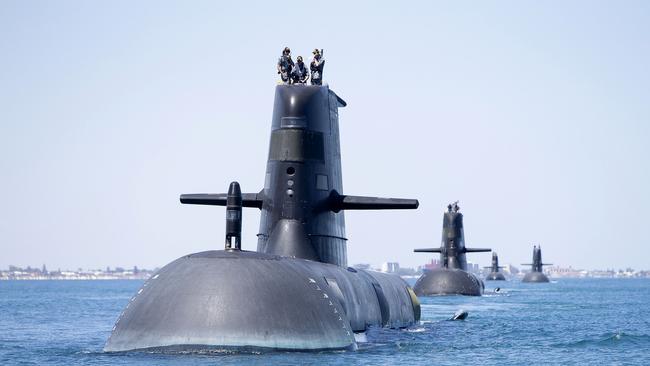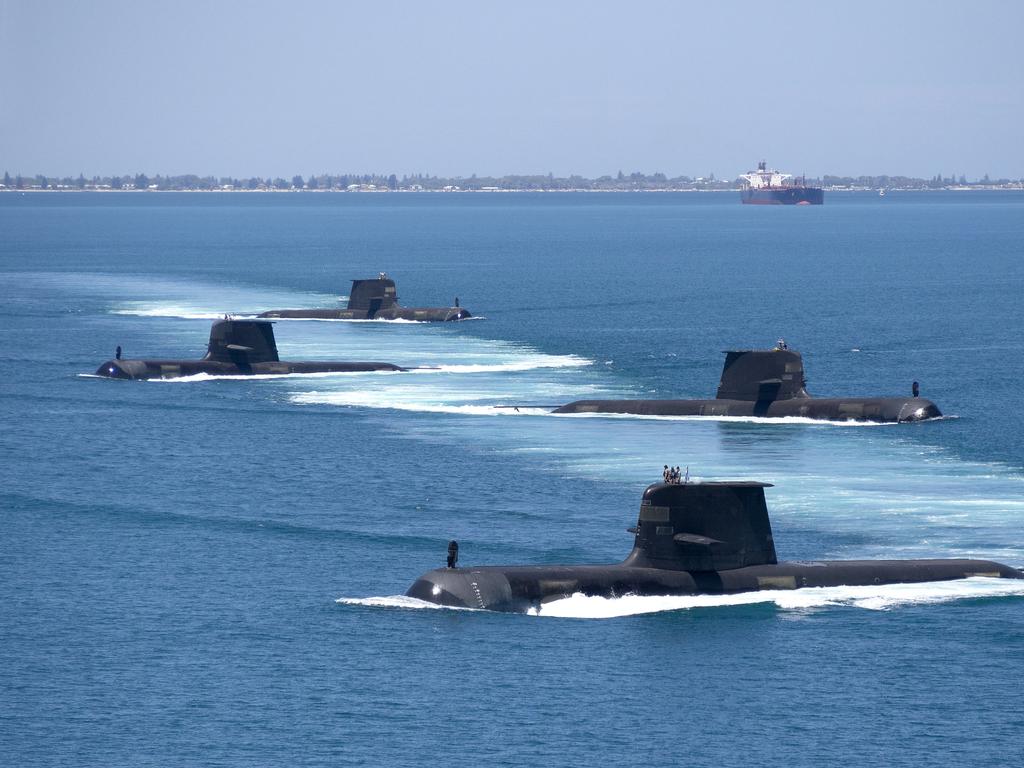Australia had almost no submarines available for more than four years as China awakened
In one of the most tightly held national security secrets in the country’s history, Australia had almost no submarines to defend itself for at least four years during the Rudd/Gillard years.

In one of the most tightly held national security secrets in the country’s history, Australia had almost no submarines available to defend itself for at least four years from 2009 to 2012 during the Rudd/Gillard governments.
It was an embarrassing bungle that could have had tragic consequences in a conflict but was considered too sensitive to reveal publicly at a time when China was aggressively expanding its navy.
The shocking history of the mismanagement of the six-boat Collins class submarine fleet at that time had the effect of delaying any discussion inside the government of building new submarines for years.
That delay has led to the current crisis-point for the government, as it is forced to implement a high-risk plan to extend the life of its six ageing submarines until the new fleet of nuclear submarines arrives in the 2030s.
The Australian revealed last week that the government had been warned in a new classified report that the $5bn plan to extend the life of the navy’s ageing fleet of Collins-class submarines for another decade was a perilously high-risk endeavour that was not guaranteed to succeed.
The revelation of the parlous state of the nation’s submarine fleet a decade ago, caused by poor planning, no spare parts, shoddy maintenance and a lack of crews, is contained in the first comprehensive history of the Collins class fleet by defence analyst Andrew Davies, to be published by ASPI on Tuesday.
It reveals that the then Labor defence minister Stephen Smith, now Australia’s High Commissioner in London, was told in 2010 that there was all but zero submarine capability available to defend the country at that time – a fact that could not be released publicly.
“(Mr Smith) was being told that the number of Collins submarines in the water at most times was either zero or one, with what seemed to him to be remarkably lax readiness requirements, given the supposedly critical nature of a robust submarine capability in Australia’s military strategy,” Mr Davies writes in a new book, Nobody Wins Unless Everybody Wins.
The book quotes Stuart Whiley, chief executive and managing director of the government-owned submarine builder ASC, saying that the then prime minister Kevin Rudd became involved in finding solutions to the litany of problems in the submarine fleet, which was then less than 10 years old.
“It was obviously very difficult; there were a number of reliability issues inside Collins,” Mr Whiley recalls.
“There were issues related to the supply chain, funding, crewing and availability of submarines. And we had a number of cases where we essentially had zero availability of submarines, which was an event that triggered a prime ministerial discussion.”
These were problems that had festered ever since the submarine fleet was launched between 1996 and 2004 under the Howard government but which came to a head from 2009 to 2012.
Mr Smith said the terrible state of submarine availability at that time made it politically impossible to argue the case to build more submarines for the future.
Mr Smith recalled that he would tell people at that time: “There’s no way in the world we can start a future submarine program process with the national security committee, or the expenditure review committee, or my colleagues, unless and until we’ve actually made some progress on problems and have outcomes of Collins being in the water.”
The book outlines how in 2010 the ASC simply “ran out of parts” for the Collins lass submarines and how there was a desperate shortfall of qualified submariners to crew the few boats that were operationally available.
Former Navy chief Ray Griggs recalled how when he took over as chief of navy in June 2011 they had only three crews for six submarines.
“And the experience level in those crews was low,” Mr Griggs said. “I knew the exact cumulative experience level of each group. We used to monitor and we would move people around to balance out experience levels across the three crews. That’s how dire it was.”
Mr Davies’ book recounts how Mr Smith ordered the Coles Review into the Collins class fleet two weeks after The Australian revealed in June 2011 that not a single submarine was available for deployment.
But he says that review was a success and that between 2012 and 2016, the management, sustainment and availability of the Collins class fleet finally reached acceptable international benchmarks.







To join the conversation, please log in. Don't have an account? Register
Join the conversation, you are commenting as Logout